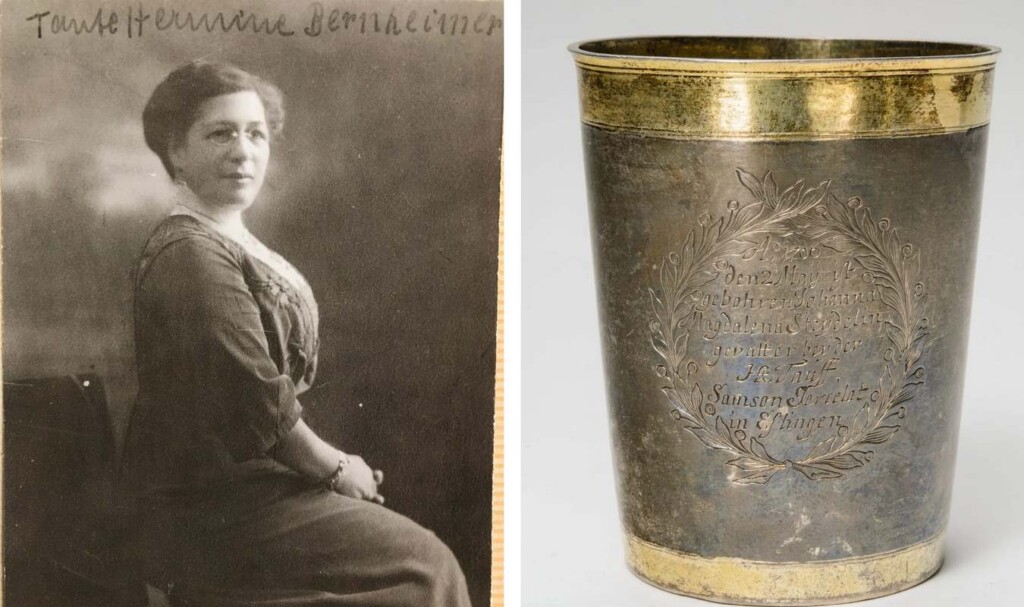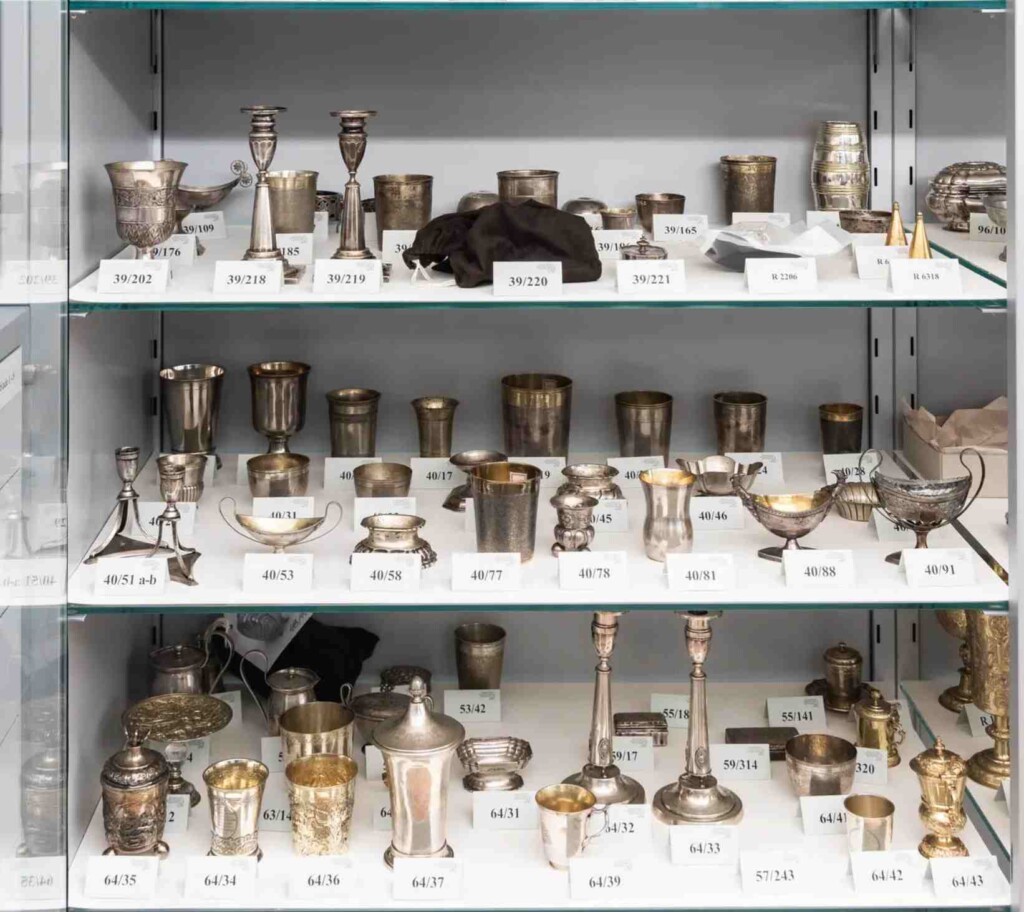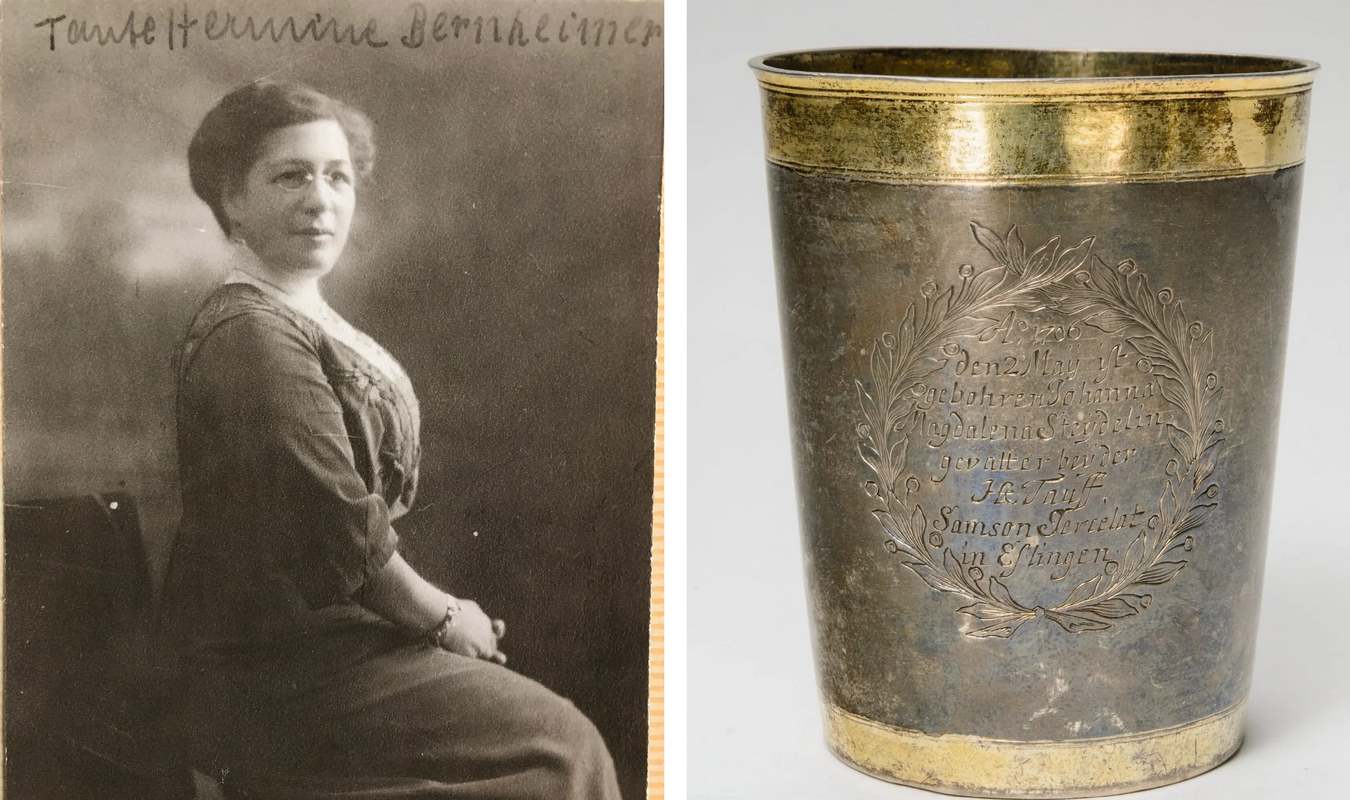
In Germany, a small handful of dedicated people are, without any invitation or request, gradually reuniting silver and gold objects with the Jewish families who once owned them.
While it’s well-known that fine art was confiscated from Jews living within the Third Reich, what’s less talked about is the assortment of candelabras, kiddush cups, and other important objects that were taken and usually sold to fund the regime.
Museums in Stuttgart, Munich, Hamburg, and Berlin are all on the hunt for public records that can prove rightful ownership on behalf of the descendants of those whose possessions were confiscated, many of them now living in the US, Israel, and elsewhere.
“I started looking for heirs of looted silver following an exhibition titled ‘Silver for the Reich — Silver Objects from Jewish Property in the Bavarian National Museum,’ which consisted of many of the 112 stolen items stored in the museum,” Matthias Weniger, a curator and head of provenance research at the Bavarian National Museum in Munich, told the New York Times in an email.
Weniger has had some success—he managed to return a silver kiddush cup, used to honor the Sabbath in the Jewish tradition, that belonged to a Jew named William Bergman who survived the Holocaust and moved to the US where his son, Steven, was able to accept the cup on his behalf almost 80 years later.
He also managed to, quite ironically, return a 300-year-old, gold and silver baptismal cup to the family of the Jew Hermine Bernheimer who perished in Theresienstadt concentration camp in 1939. Her great niece, Naomi Karp, donated the cup to the Jewish Museum in the town of Göppingen where Bernheimer was born.

“The key to success in the search for heirs,” Weniger said, “is multiple databases and archives. Some cases take several years. Others take months, often many months. It took many months to find Steven Bergman.”
Irene Krauss, Weniger’s colleague and historian, uses multiple archival sources to look for the heirs of these silver objects, including ancestry.com, findagrave.com, and newspapers.com.
MORE FAMILY HEIRLOOM STORIES: Singapore Sleuth Spends 8 Months Tracking Down a Man to Return Family Heirlooms–And Finally Succeeds
With findagrave, Krauss was able to locate a tombstone of Bergman’s which showed he had children, and then used newspapers.com to find an obituary.
Weniger’s Bavarian National Museum has 110 silver and gold objects confiscated during the Third Reich, a number which pales in comparison to the Berlin City Museum, which acquired 4,700 pieces of gold and silver tableware, jewelry, and other heirlooms from a pawnshop, of which only around 10% had any documentation at all showing who had previously owned them.
Many of the heirs, the Times reports, choose to donate the heirlooms to museums. In one case, 31 relatives had to sign off on such a donation. Others choose to lend them for various periods.
MORE LOST FAMILY HISTORY: 101-Year-old Woman Is Amazed After Being Reunited with Her Lost Painting Looted by Nazis
Famously, and quite possibly erroneously, Joseph Stalin was supposed to have described 1 death as a tragedy and 1 million as a statistic.
As statistical as the Holocaust can seem sometimes, it’s inspiring to know that the dead are remembered and honored, not only by their kin but by others as well, others like Weniger who feel inclined to delve into whatever is left accessible of their lives into order to right past wrongs, and maybe even help their souls to rest more easily.
SHARE These Museums Powerful Gestures Of Provenance On Social Media…




















